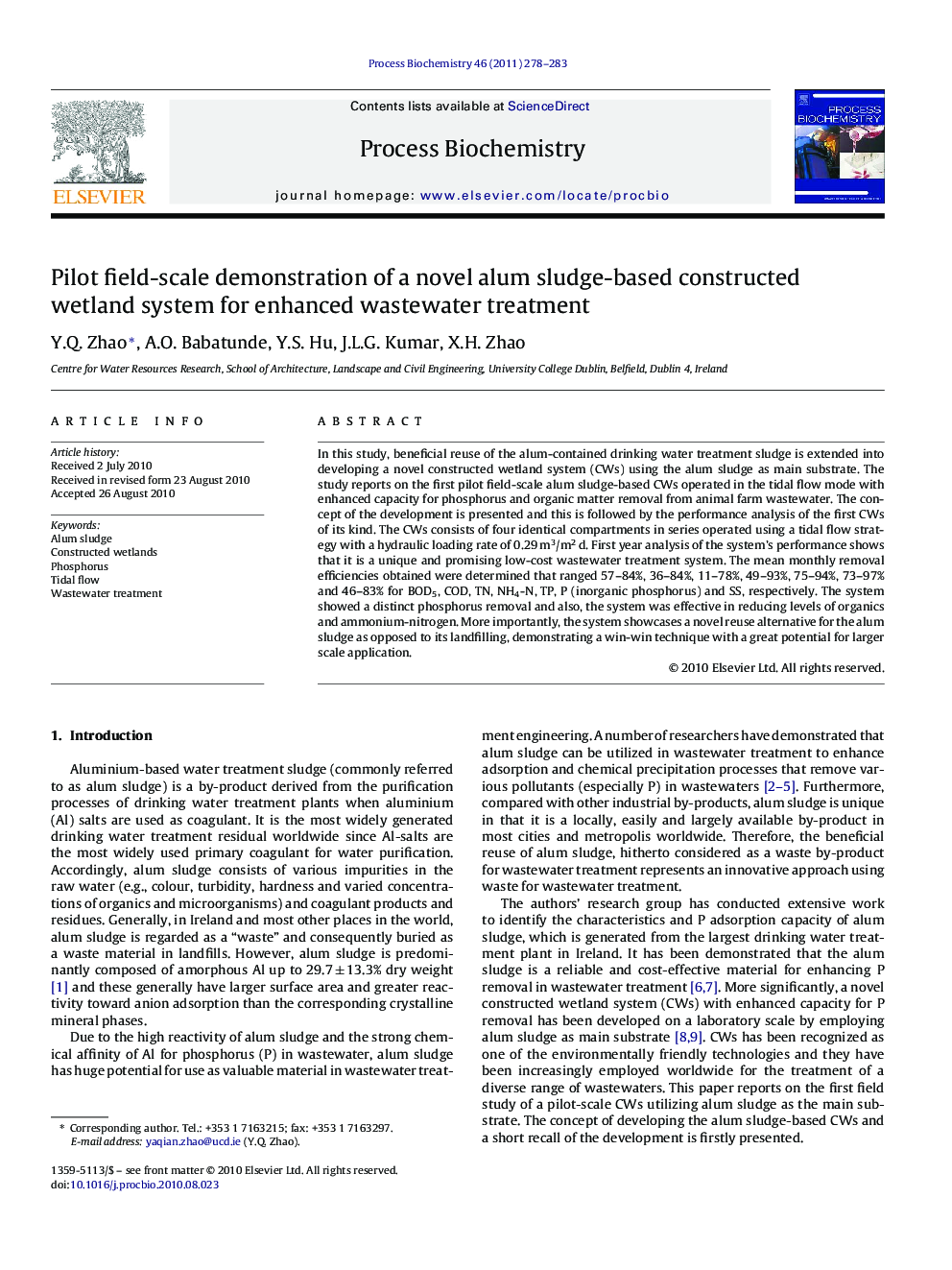| Article ID | Journal | Published Year | Pages | File Type |
|---|---|---|---|---|
| 35387 | Process Biochemistry | 2011 | 6 Pages |
In this study, beneficial reuse of the alum-contained drinking water treatment sludge is extended into developing a novel constructed wetland system (CWs) using the alum sludge as main substrate. The study reports on the first pilot field-scale alum sludge-based CWs operated in the tidal flow mode with enhanced capacity for phosphorus and organic matter removal from animal farm wastewater. The concept of the development is presented and this is followed by the performance analysis of the first CWs of its kind. The CWs consists of four identical compartments in series operated using a tidal flow strategy with a hydraulic loading rate of 0.29 m3/m2 d. First year analysis of the system's performance shows that it is a unique and promising low-cost wastewater treatment system. The mean monthly removal efficiencies obtained were determined that ranged 57–84%, 36–84%, 11–78%, 49–93%, 75–94%, 73–97% and 46–83% for BOD5, COD, TN, NH4-N, TP, P (inorganic phosphorus) and SS, respectively. The system showed a distinct phosphorus removal and also, the system was effective in reducing levels of organics and ammonium-nitrogen. More importantly, the system showcases a novel reuse alternative for the alum sludge as opposed to its landfilling, demonstrating a win-win technique with a great potential for larger scale application.
